#instead of dmc 5 in an interview
Explore tagged Tumblr posts
Text
I like that one singular guy making a single post extremely vaguely suggesting there might be something in the works can set off EVERY SINGLE NEURON IN MY BRAIN AND MAKE THEM ALL FIRE ON THE DEVIL MAY CRY 6 SETTING.
Also Devil Trigger sounds rad as fuck as a string arrangement.
#this isn't the first potential hint that capcom is working on 6 either#I remember the friend who sent me the post from today also sent me a vid of one of the series' VA's *very naturally* saying dmc 6#instead of dmc 5 in an interview#and I am still going to hold my breath I fucking know what capcom is like with making sequels for games that aren't resident evil or monhun#but EEEEEEE I HOPE IT'S REAL I HOPE IT'S HAPPENING I'M SO EXCITEDDDD#dmc#devil may cry
3 notes
·
View notes
Text
Added a brief section at the end of my Netflix Devil May Cry review about Adi Shankar because seriously, for as much as I enjoyed my time with the show, I sincerely hate that guy and his weird grifting ass behavior lol.
If you don't want to go searching for it: I don't like Adi's politics and I don't like how he's smooching up with right-wing assholes. I can't get into his head to know why but my theory/assumption is that he's looking to be friends with whoever's most popular/has the most money, and right now in 2025 America that's trump supporters--though I could be totally wrong and he could just be a flat-out bigot that's good at pretending. I hate it, you hate it, we all hate it and if we get christofascist apologia for season 2 I am dropping that show faster than a hot potato. For now, though, I still enjoyed my time with the first season, I'm hopeful the second season continues, improves, and doesn't fumble the bag the first season set up.
Also as a general note to the fandom at large: stop being a bunch of gatekeeping assholes to new fans. Regardless of your opinion on the show, yelling at people who liked the show and now want to get into Devil May Cry is counterproductive and stupid. If you didn't like the show bc it's not like the games, more people getting into the games from the show is not a bad thing and will solve your problem faster than telling new fans they suck and "don't get it." Additionally don't do weird gameplay gatekeeping on old fans who enjoyed the show, that's also a great way to poison the tank.
EDIT 5/23/2025: yeah no Adi Shankar is a complete fucking grifter with an ego the size of twenty blimps. I saw the interview he did where he talks about how, after he signed his contract w/ capcom, he learned DMC5 was in production and slated to come out soon and was upset.
Why would Adi Shankar, supposed fan of Devil May Cry whom he has said in many trailers and promotional videos for the animated series he made, be upset you might ask? Because he wanted his show to be the thing to "revive" the series. He wanted HIS show and people praising it to be the message to capcom that people care about Devil May Cry! And the moment he learned his beloved series WASN'T dead and WAS coming back, he got pissy, because he wasn't going to get praise for it. He literally makes a comparison to Dino Crisis, another actually firmly dead series from Capcom, and that he would've rather tried a Street Fighter animated series (which lol. lmao even. wtf do you mean you thought SF was dead and that an animated series would revive it. literally it's a legacy fighting game from capcom and while 5 wasn't the best the series sure as shit wasn't "dead" by any stretch of the imagination) if he had known DMC was getting another game.
This is why Adi Shankar's name is slapped all over the show--not the studio, or the OTHER writer whose name is nowhere to be seen on promotional material, it's just Adi Shankar. This is why he talks about the series not being written off in his bootleg universe takes on series. This is why he went to a fucking WWE show in full cosplay and had the announcers credit him as "the creator of Devil May Cry"--NOT "the Netflix series, Devil May Cry", JUST Devil May Cry.
He wanted to be the sole benefactor. He wanted all the praise. He wanted to be credited with DMC finally, FINALLY getting "brought back" despite the fact his show was likely always planned to be a reinterpretation. He wanted to be the catalyst for a 'new age' of Devil May Cry. He wanted this to legitimately be a massive success that would push him into leading the series.
But DMC5 happened. Itsuno returned and made a damn good game. And Adi got upset, instead of being excited, because his big dreams of re-imagining and leading the series to 'new heights' were squashed the moment the ink was put to paper. Fucking jackass. I couldn't hate this man more if I tried.
#devil may cry#adi shankar#discourse#(I guess look I don't want to talk about it any more than I have to I just want my own opinion to stand on its own on my blog)#EDIT: i made this an edit and not a reblog bc i don't want to poison people's dashes lol#anyways yeah still fuck this guy#i hate adi shankar and you should to#the best possible scenario for future seasons is that he's removed from production entirely
5 notes
·
View notes
Text
ₒₗd ₛcₕₒₒₗ
Grandmixer D.ST.
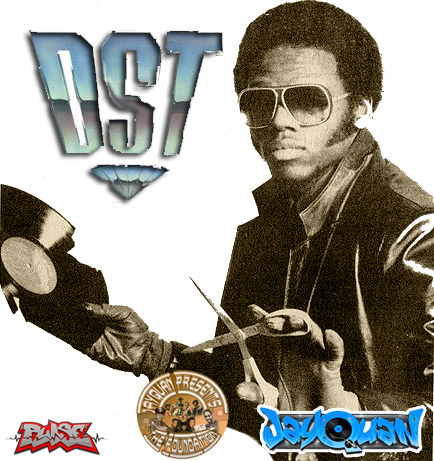
Derek Showard, better known by the stage name GrandMixer DXT, is an American musician, one of the earliest to use turntables as a musical instrument in the 1980s. Renowned for his scratching techniques and his showmanship on stage, such as breaking in to dance or scratching records with other parts of his body other than his hands
Early in his career, he was known as Grand Mixer D.ST, a reference to Delancey Street on the Lower East Side of Manhattan, New York City. He was featured in the influential hip hop film Wild Style.
Widely recognized as a pioneer, Grand Mixer DXT is credited as being the first turntablist. He was the first person to establish the turntable as a fully performable and improvisational musical instrument. Especially important is his technique of altering the pitch of the note or sound on the record.
He is also credited with helping to popularize DJing through his scratching on Herbie Hancock's single "Rockit", from the Bill Laswell and Material produced album Future Shock. He is featured in the 2001 documentary, Scratch.
D.ST’s original group was The Infinity Four MC’s consisting of Kingpin Shahiem, Mike Nice, Baron and Legendary female rapper Kimba.
While working with the Infinity Rappers n 1982, he was part of the first hip hop tour to Europe with Afrika Bambaataa, Rammellzee, Fab 5 Freddy, Rock Steady Crew, the Double Dutch Girls, and graffiti artists Phase 2, Futura, and Dondi.
Phase 2
In late 1972, Phase 2 first used an early version of the "bubble letter" or "softie", a style of writing which would become extremely influential and is considered a "giant leap" in the art form.The puffed-out, marshmallow-like letters drawn by Phase 2 were soon copied by other artists who added their own variations.
Phase 2 quickly embellished on his original form, creating and naming dozens of varieties of softies, such as "phasemagorical phantastic" (bubble letters with stars), "bubble cloud", and "bubble drip".He described the thrill of tagging subway cars as "impact expressionalism".He is also credited with having pioneered the use of arrows in graffiti writing around this same time. Hip-hop journalist Jeff Chang has noted that Phase 2's canvasses from 1973 have "been widely recognized as defining the early genre."

Futura 2000
He started to paint illegally on New York City's subway in the early 1970s, working with other artists such as ALI. From 1974 to 1978, he served in the U.S. Navy and traveled all over the world. In the early 1980s he showed with Patti Astor at the Fun Gallery, along with Keith Haring, Jean-Michel Basquiat, Richard Hambleton and Kenny Scharf.
Futura painted backdrops live on-stage for British punk rock band The Clash's 1981 European tour. In 1985, he was on the first meeting of the graffiti and urban art movement in Bondy (France), on the VLP's initiative, with Speedy Graphito, Miss Tic, SP 38, Epsylon Point, Blek le rat, Jef Aérosol, Nuklé-Art, Kim Prisu, Banlieue-Banlieue. More recently, he is a successful graphic designer and gallery artist.
One of the most distinctive features of Futura's work is his abstract approach to graffiti. While the primary focus, during the 1980s, of the majority of graffiti artists was lettering, Futura pioneered abstract street art, which has since become more popular. Conversely, his aerosol strokes are regarded as different from those of his peers, as they are as thin as the fine lines usually associated with the use of an airbrush.

Dondi
Graffiti became a serious part of Dondi's life in the mid-1970s. He tagged using "NACO" and "DONDI", and worked on refining his style, gradually moving from simple tagging to building more elaborate pieces. Using the name Dondi (a version of his own name) was considered very risky at the time, as the Metropolitan Transportation Authority and the New York Police Department (NYPD) were trying to crack down on writers. In 1979, Dondi officially adopted his name when he painted a giant piece on the roof of his house.
He became a member of TOP crew (The Odd Partners) in 1977. In 1978, Dondi formed his own crew, named CIA (Crazy Inside Artists), which included other prominent artists such as his good friend DURO. For the next 20-odd years, Dondi became recognized as the stylistic standard, influencing generations of graffiti writers.
Dondi pioneered many of the styles and techniques still used by modern graffiti artists. Though he would often do wildstyle pieces for the benefit of other writers (like the famous 2MANY piece), he wanted the public to be able to read and enjoy his work, so he would focus on readable letters with intricate fills and characters.
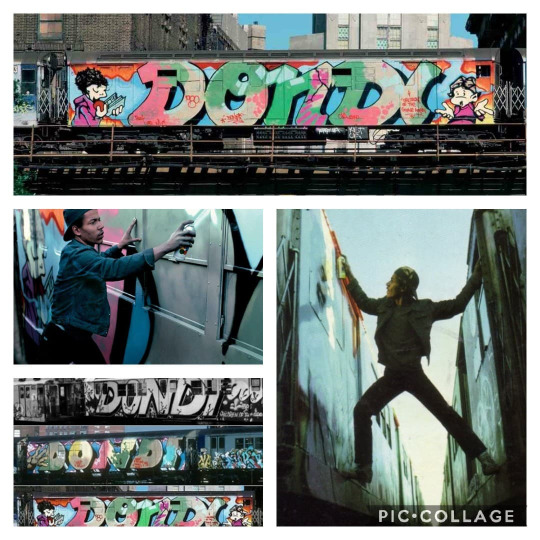
scratch
Scratching, sometimes referred to as scrubbing, is a DJ and turntablist technique of moving a vinyl record back and forth on a turntable to produce percussive or rhythmic sounds. A crossfader on a DJ mixer may be used to fade between two records simultaneously.
While scratching is most associated with hip hop music, where it emerged in the mid-1970s, from the 1990s it has been used in some styles of rap rock, rap metal and nu metal. In hip hop culture, scratching is one of the measures of a DJ's skills. DJs compete in scratching competitions at the DMC World DJ Championship and IDA (International DJ Association), formerly known as ITF (International Turntablist Federation). At scratching competitions, DJs can use only scratch-oriented gear (turntables, DJ mixer, digital vinyl systems or vinyl records only). In recorded hip hop songs, scratched "hooks" often use portions of other songs.
Graffiti
In the early days, the ‘taggers’ were part of street gangs who were concerned with marking their territory. They worked in groups called ‘crews’, and called what they did ‘writing’ – the term ‘graffiti’ was first used by The New York Times and the novelist Norman Mailer. Art galleries in New York began buying graffiti in the early seventies. But at the same time that it began to be regarded as an art form, John Lindsay, the then mayor of New York, declared the first war on graffiti. By the 1980s it became much harder to write on subway trains without being caught, and instead many of the more established graffiti artists began using roofs of buildings or canvases.
The link between hip hop and graffiti evolved as a competition, much like the dance moves of the hip hop culture. Graffiti began to show up on subways in New York and other cities as a form of expression of the culture who listened to rap music. Graffiti distiguished by "tags" or distinguishing marks of the originators and a way to distinguish or stand out from other graffiti artists. Graffiti quickly spread and was picked up by others.
Graffiti is viewed as a form of artistic expression by some and trash by others. Graffiti has been seen adorning the album covers of some rap artists, on sides of buildings, on busses, on clothing, and various imaginative places where you sometimes have to stop and wonder, "how in the world did they manage to get up there?"
Young rappers growing up and wandering the city streets still see graffiti all around them. For some, graffiti represents decay, but for hip hop culture, graffiti provided the visual inspiration that encouraged other forms of creativity and expression, such as emceeing.

Ed Piskor
Ed Piskor is an American alternative comic book artist. He gained his first fame illustrating stories in Harvey Pekar's 'American Splendor' series. Among his original works are the satirical comic 'Wizzywig' (2011) about hacking culture, and the educational graphic novel series 'Hip Hop Family Tree' (2012-2016), which deals with the history of hiphop. In 2017 he created another historical passion project, 'X-Men: Grand Design', a nostalgic look back at the history of Marvel Comics' 'X-Men' franchise.
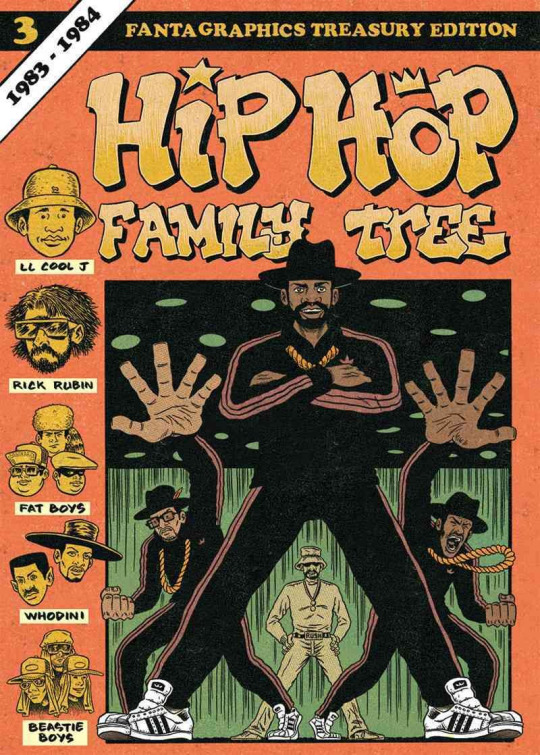
Hip Hop Family Tree
In 2012 Piskor started a monumental project, named 'Hip Hop Family Tree' (2012-2016). It narrates the history of hiphop and various legendary artists and groups, among them the Sugarhill Gang, Grandmaster Flash, Run DMC, Schoolly D., the Beastie Boys, Ice-T, Public Enemy, Dr. Dre, Rakim, Will Smith... Piskor said he was inspired by Robert Crumb's biographical comics about old blues and country artists. Just like Crumb loves music from the interbellum, Piskor is a hardcore hiphop fan. Even as a child he'd try to dig up the oldest singles by certain hiphop artists, particularly trying to find out where a certain musical sample came from? He is so well-educated in the genre that he felt he would be the right artist to make a comic book about the genre. As a bonus he would learn more about its roots too. 'Hip Hop Family Tree' doesn't just focus on the historic facts, but Piskor also illustrated many fascinating and occasional funny anecdotes about certain artists. Graphically Piskor gave the stories a yellowish newsprint effect to match the "old school" feeling.
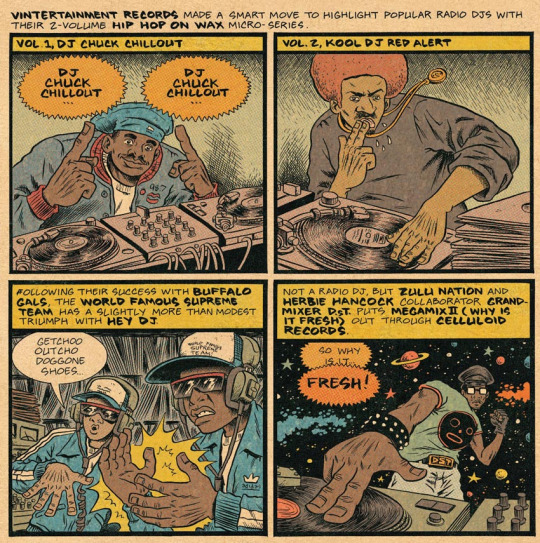
From January 2012 until December 2015, the stories ran weekly on the website 'Boing Boing'. Fantagraphics later published the series in comic book format. In 2015 'Hip Hop Family Tree, Volume 2' won the Eisner Award for Best Reality-Based Work. It also entered the New York Times Best Sellers list, landing the artist an interview in Time Magazine. Rap legend DMC (of Run DMC) praised 'Hip Hop Family Tree' with the words: "I'm happy this book is here, because it tells a truth." Fab Five Freddy (Grandmaster Flash) shared a panel from one of the comics on his Facebook page and stated: "Being in an Ed Piskor comic is cool enough to freeze hot water." Chuck D. (Public Enemy) also tweeted favorable comments about Piskor's work.

As a huge fan of comics and hiphop since childhood Piskor also saw a correlation between the two art forms. Both are trash pop culture, initially scorned by true art lovers but eventually gaining more critical respect. Many cartoonists and hiphop artists take pseudonyms to give themselves a different public persona and alter ego. Both rapping and cartooning are often said to be easy. Most importantly, Piskor noticed that both hiphoppers and cartoonists have a tendency to borrow material, or sample, from their predecessors and colleagues. It motivated him to pay more homage to other comics in some of his panels.
Hip Hop album covers
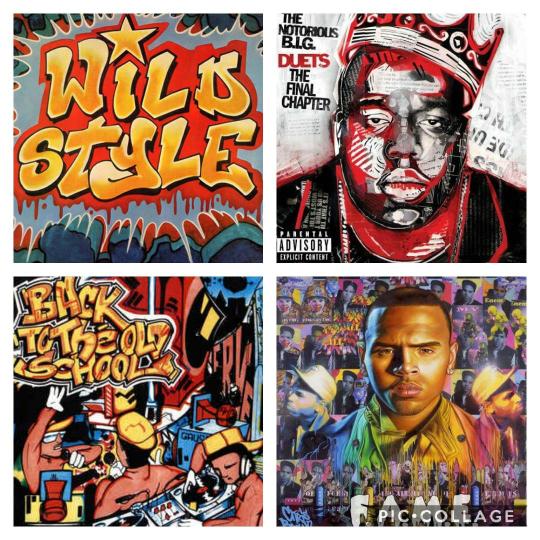
Idea influence
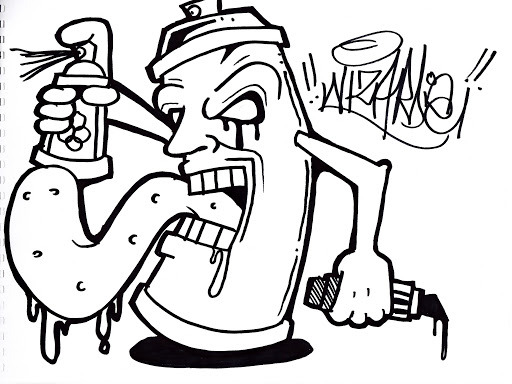
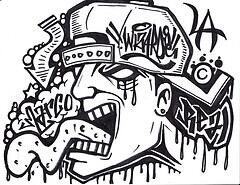

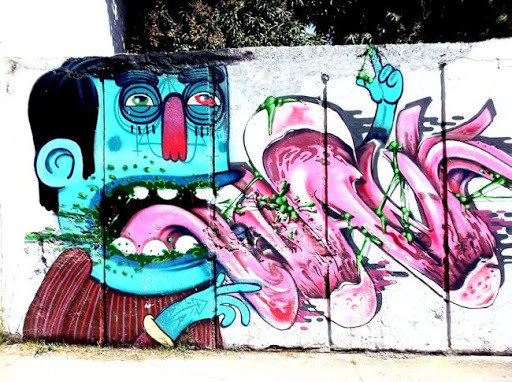


vision boards
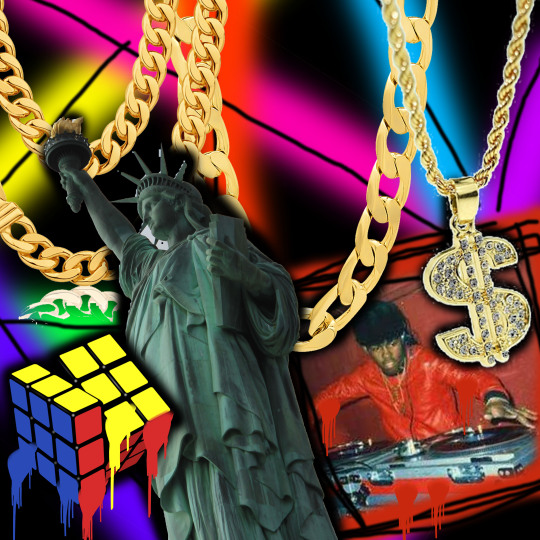

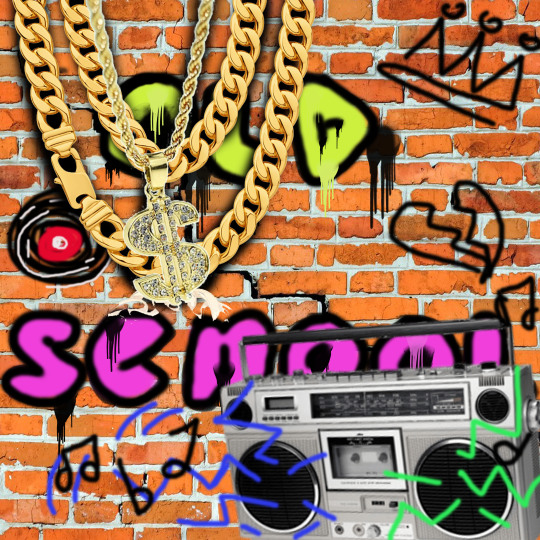
5 notes
·
View notes
Note
"[DMC5] inspired by the reboot." = Itsuno liked some of the things from DmC, so some stuff got implemented into 5, hence the childhood home visit, style announcer (the voice announcing your rank), & shifting layout to name a few. There's a few interviews mentioning that.
Neat, so myfeeling of „huh, this suddenly seemsfamiliar…” was right! XD Thanks for confirming it, anon.
I actuallythink that was a great decision. Take the best parts – those that alreadyproved that they work – and keep working with them, instead of throwingeverything awayand start over completely.
6 notes
·
View notes
Text
What Is The Time Period In The Devil May Cry Series?
From what I’ve gathered the Devil May Cry series takes place in a Retro Universe -- basically where retro, vintage or antiquated technology, styles and aesthetics are still used, but which otherwise is or at least resembles The Present Day. Often cultural styles from different time periods are mixed and matched, usually with those that date no later than The '60s or so.
This makes sense as the technology in the series varies. For example, in Dante’s office he has a rotary phone, a boombox, a jukebox and a old color TV (in the anime). Later on in the series Nero shows up with some modernized-looking cordless headphones. This makes it hard to pin point the time period with just the few pieces of technology we’ve seen in the series. There’s also the possibility that Dante is just too poor to upgrade (or he doesn’t bother with it because his stuff keep getting broken every time). But that doesn’t explain why the rest of the DMC world isn’t up-to-date with modern inventions either.
In Devil May Cry 5 each of the characters used telephone booths to make their calls. But when Nero was at the fancy-looking hotel, he made his call with a rotary phone. However, with Nico in order to receive those calls from him, she used what looked like one of those first ever mobile phone (which probably took hours to charge, lasted 35 minutes or so, and cost a lot too). Or it could have been a satellite phone? At that point, it was clear that the DMC world isn’t modeled after a particular time period and it’s not going for realism either.
After all, modern cell phones would have been a thing for them by now and even computers. Instead, it borrow things from different time periods to create a retro and aesthetic pleasing game for us to enjoy. With a bit of digging around I also found out that Hiroyuki Kobayashi (the producer of DMC1, DMC4 and the DMC:TAS) once stated in an interview that the DMC world is very much like ours and it has phones -- just not cellphones. I can’t find the original article, but there was another old article that had a similar discussion with him about it...
Hiroyuki Kobayashi: In Devil May Cry [series character Dante's] office, they do have a phone, but it's a black analog kind of phone. That feeling of what the world is like is something that we really want to protect, so even though it does have phones, we don't want it to be a world where there is a cell phone and you can immediately talk to anyone in the world.
Having said that, it is a world where they do have motorbikes, so creating this mix between high-tech and analog technology -- a world where some things have advanced and some things haven't advanced -- is pretty difficult.
For example, there's a jukebox in Dante's office, but it plays old vinyl records. Some parts of technology have advanced, and some haven't advanced. Keeping that true throughout the series and the game is difficult, and we need to have all the core members on the same page. That is certainly one of the challenges in making the game. Having said that, it is a lot of fun to be able to create this kind of unique world of our own design.
After a little more digging I found more information on this subject and it’s actually a lot more recent too. On the Polygon website, Editor Matt Leone was at Capcom’s San Francisco office during this year’s Game Developers Conference. He met with Devil May Cry 5 director Hideaki Itsuno, senior producer Michiteru Okabe, and producer Matt Walker to discuss DMC5. Source: Devil May Cry 5: The post-mortem interview
Matt Leone [Interviewer]: To a certain degree, the game — and Devil May Cry in general — feels like a kitchen sink of different ideas; a lot of things could fit in the Devil May Cry world. Can you think of any things that have come up that felt too out of bounds for that universe?
Hideaki Itsuno: It’s interesting. I know this isn’t quite the direction you’re going for with that question, but there are things that technically don’t fit in a Devil May Cry, and it generally falls around the sense of style that we have. For instance, it’s not as cool for someone to take out a cell phone and say, “Devil May Cry” [with a normal voice]. But when you have a big landline phone on a desk, you can pick it up and say “Devil May Cry” [with a deep voice]. And that really comes down to the fact that we grew up in a certain era. We grew up in the ’70s and ’80s, before there was technology like this. That sense of style is something that’s been ingrained into us from having grown up in that period. There’s a lot of stuff in the game where they don’t use the latest technology, because from our point of view, this is what’s cool.
Eventually, if we ever have a director on a new Devil May Cry game who is in their 20s or something, they’ll have grown up with completely different stuff. So then the sense of style might change, and you might have stuff where in the game they’re watching YouTube or whatever.
But there’s also kind of that element of, what’s stylish? What we know to be cool is really based on our experiences in the ’70s and ’80s, but then also we have the cool dark hero element. Like with Dante, sure, he doesn’t really do terrible things — he doesn’t kill humans, that kind of thing — but there are dark aspects to him, or to the heroes in these games. Yet really, they’re pure, proper heroes that are very all about justice and protecting.
What got me thinking about all this was because when I was going over my old fanfiction I noticed something, well, more like the lack of something. I was wondering why I was making my original character go to the library to research books for information on the occult when she could’ve just google’d it (or use an equivalent of the search engine).
But then I realized that it felt out of place if I did that because not once had I ever seen or heard any mention of computers in DMC series (especially in DMC3 as that was the game my fanfiction was focused on). Maybe they do exist, but it was still in the early stages of creation? Or that it wasn’t available for the public and only scientist, military, government or whatnot were the ones using it? I do not know, but books are a valuable source of information and will always be around. So I figured I couldn’t go wrong with having my character do some old-fashion research.
It also makes sense that when Devil May Cry was first released it was in 2001, so of course that had some influence. At the time of writing this post it’s been 18 years since then and technology has made many advancements and will keep on advancing. But even before that in 1998, after the completion of Resident Evil 3, DMC originally started off as a part of the Resident Evil franchise, under the name "Team Little Devil". Early research and development work included a trip to Spain to examine various castles as a basis for the game's environments. So, of course, that also helped to shape DMC into what it is today.
I get the feeling that DMC4 to DMC5 is kinda like when the 90s meet 2000s. In which those who live in the era know what it was like to see cassettes and VHS tapes turn into CD-ROMs. Floppy disk to USB flash drives, Walkman/Discman to mp3 or ipods and so on.
Now, what about cameras? Hm, I do wonder which version of it is fitting for the DMC series. There’s a painted portrait of the whole family in Dante’s childhood home, but on his desk there is a photo of his mother. It might be one of those hand-coloring photograph? I figured because of the clothing they’re wearing looks old-fashion, it may suggest that photography might not have been that common during that time. Paintings were probably popular, but Eva’s photo on Dante’s desk is in color. Maybe it is an actual photo from a camera (the kind that’s not black & white -- film camera possibly)? Unless it’s a small hand-painted portrait of her?
I’ll research this later. Anyway, these were just my musings that spawn from my old DMC fanfiction. Obviously, I don’t have to be canonically correct but I personally like to do my best in sticking with the source material. That usually means I have to do a bit of research to properly understand whatever peaks my interest and then figured how what I want to do with that information. Sometimes it helps me to better build up the DMC universe in my stories from. I also find that it even helps to make it feel very immersive for my readers.
#Devil May Cry#DMC#writing fanfiction#writing fanfic#DMC5#Devil May Cry 5#Devil May Cry V#DMCV#thoughts#Dante Sparda#gaming#video game#video games#writing Devil May Cry fanfiction#writing DMC fanfiction#DMC fanfiction#Devil May Cry fanfiction#DMC5 fanfiction#writing Devil May Cry 5 fanfiction
12 notes
·
View notes
Text
The Story Behind Devil May Cry 5's Music, And The Certified Banger Devil TriggerThe Story Behind Devil May Cry 5's Music, And The Certified Banger Devil Triggervideo games
New Post has been published on https://www.gamerzcourt.com/the-story-behind-devil-may-cry-5s-music-and-the-certified-banger-devil-triggerthe-story-behind-devil-may-cry-5s-music-and-the-certified-banger-devil-triggervideo-games-2/
The Story Behind Devil May Cry 5's Music, And The Certified Banger Devil TriggerThe Story Behind Devil May Cry 5's Music, And The Certified Banger Devil Triggervideo games
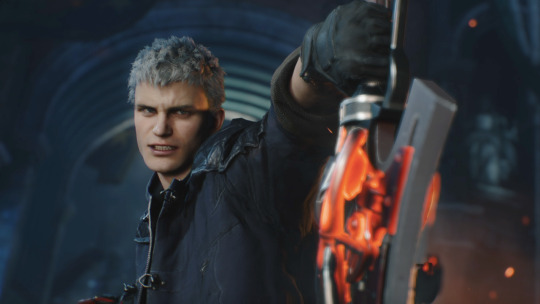
Though Capcom’s action game series has always had a particular sound for its gothic-horror-aesthetic, the current game, Devil May Cry 5, features music that really goes the extra mile to get players to feel something more as they’re working their way up to SSS rank. GameSpot recently interviewed DMC5 composers Cody Matthew Johnson and husband-wife team Casey and Ali Edwards about the making of the action game’s main tracks for its cast of characters. During this talk, they spoke about their collaboration with Capcom, how the game’s energizing and dynamic soundtrack is a game-changer, and what it’s like having the internet embrace their new sound.
Editor’s Note: This interview has been edited for clarity and readability.

Can you talk about what it was like working with Capcom for this project, and how they first got in contact with you?
Casey Edwards: Funny enough, even though I ended up writing the track Devil Trigger, I got found through one of Ali’s older tracks that she did for another video game called Killer Instinct with Mick Gordon [B. Orchid’s Theme, in particular]. I actually did some work on that game as well, assisting the composer.
Ali Edwards: Yeah, it’s like they wanted both of us without knowing that we even knew each other, or that we were married at all.
Casey: Yeah, Capcom heard that particular track and they really liked the drive that it had. It really just stood out to everyone. When I wrote Devil Trigger, I pitched her as the vocalist and they just immediately fell in love with it. So, it kinda just worked out in a weird, coincidental, ironic way.
And Cody, this is actually your third collaboration with Capcom, the first being for Marvel vs Capcom: Infinite?
Cody M. Johnson: That is true. My career is still in the early stages, which is really exciting as all these things are happening. My collaborator Jeff Rona and I did three games back to back for Capcom. We didn’t really stop. We started off with Marvel vs. Capcom: Infinite. Right after that came out, word got around to another development team about what we were doing, and they liked what they heard. So they came back to us. Right out of the gate I was working with Jeff, who wrote “Crimson Cloud” [V’s Theme], and I ended up writing “Subhuman” [Dante’s theme]. We worked on Devil May Cry 5 first, but then shortly after that, another team at Capcom hit us up to do Resident Evil 2 shortly after. So it’s been pretty exciting.
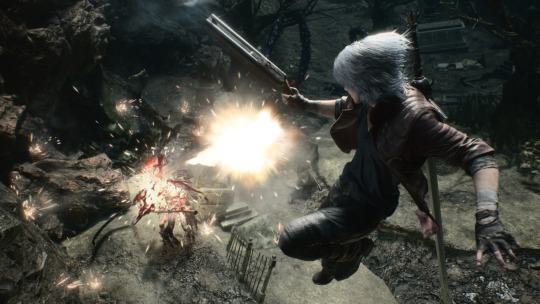
Were you fans of the series before you worked on this game?
Cody: I had played Devil May Cry 4 and the previous games a lot. I was still young enough to sneak away and play them with my friends, but it was so hard, I didn’t get very far. Even as an experienced gamer now, I’ve come back to try to play them, when I first picked up Marvel vs. Capcom: Infinite–but they’re just so hard. They’re still one of the hardest games I’ve ever played to date.
Casey: I actually grew up playing Devil May Cry. So I remembered the whole Devil Trigger aspect of the game pretty vividly, and that was what was sticking out in my head as I was writing the song. I couldn’t get it out of my head and yeah, I don’t know, I just wrote it and we just went with it. I thought for sure someone from Capcom was gonna send me an email back saying, “Hey, you need to change that.”
Ali: But that didn’t happen. They all loved it.
The big line of the song, “bang, bang, bang, pull my Devil Trigger,” is such an earworm, and it feels so appropriate for the series.
Casey: Right, I remember writing that. I wrote all these lyrics in one sitting, pretty much. For that particular part, I was looking at Ali, and then I verbalized what she was about to sing.
Ali: You were so worried I was gonna hate it!
Casey: To me, that was kind of a fun phrase. I just wasn’t sure if it would latch on to the Devil May Cry fans, you know?
Last I checked, Devil Trigger has over 21 million views on YouTube. Having those earlier reservations, are you surprised to see how much it has taken off?
Casey: Well, first of all, it’s pretty freakin’ crazy. That’s a lot of plays. It kinda blows my mind a little bit. I think there might be a few factors involved in that. People have been really excited to see a continuation of [classic] Devil May Cry. I guess in the sense that you say, the song is holding its own water a little bit as well, yeah, I don’t know what to say other than it’s pretty insane that people have played the song that many times.
Ali: Yeah, it’s definitely something we didn’t expect. We were more worried that fans would hate the track, and it would become a meme. Instead, it became a meme in the best possible way.

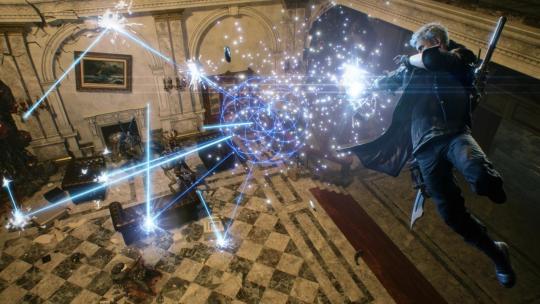
Both of you even got to perform the song live at The Game Awards. They had Rivers Cuomo from Weezer introduce your performance.
Casey: Yeah, that was awesome. We actually got to run into Rivers after that, and it was pretty great getting to take pictures with him and nerd out. I mean gosh, yeah, I was listening to them back in high school, so that was pretty awesome. And yeah, getting to play at The Game Awards was, I mean, a dream come true. And I know it’s a relatively new awards show, but they had so many awesome people on stage, and we got to share a stage with Hans Zimmer. That’s nuts.
Ali: Yeah, that was pretty crazy, it was a blast. It was such a crazy production if you think about it. It takes a huge team to put on a production of that magnitude. It’s crazy seeing it all happen, and being a part of it, continuously.
As far as working on Devil May Cry 5, I can only imagine how much planning went into writing the tracks and getting them just write. Can you talk about what the collaborative process was like with the other composers at Capcom.
Cody: Yeah, from the very beginning, Capcom wanted, I should say, independence. They wanted to make sure each of these key tracks could exist separately from one other, but still work together within the Devil May Cry universe. We worked with Kota Suzuki [DMC5’s main composer], who actually wrote the track “Legacy,” which was in the final trailer. He was part of the development team that flew out to LA when we did the recording sessions for the bigger tracks, including “Subhuman” and “Crimson Cloud.” Other than that, Capcom didn’t really restrict us; they really wanted the score in these scenes to give identity to their characters.
Casey: When we were working with Capcom Japan, they had some clear visions for what they wanted for some of these tracks, and it was really nice getting to implement previous work I had done in the game, and getting to bring it to new light towards the end of the gaming experience.
Ali: After they heard me on “Devil Trigger,” I guess maybe that’s when they reached out for “Legacy” with me. I didn’t think was going to happen until the game was released. I wasn’t sure that was ever going to see the light of day in trailer form. And so I remember being pleasantly surprised when that came out. It’s an exciting track, it’s really beautiful, with swelling strings, and it was amazing for the fans to finally hear that. Working with Kota on that was a great experience as well.
That song really comes up at such a great moment in the game. It also highlights how different a lot of the tracks are in the game, yet they work really well when you bring it all together.
Casey: Yeah, for sure. I think that’s one thing people can get lost sometimes. They forget, “Devil Trigger,” for instance, is some weird hybrid rock pop thing, but I am also a classically trained orchestral composer and Ali does anything from soft, ethereal vocals to just mind-blowing powerful pop vocals, and stuff like that.
Ali: I started out as a jazz singer, so there’s that, too. But we got to be totally crazy with it. Working on a session musician, you can be asked to do anything, and I think your willingness to be a chameleon is really where your usability as a session musician really comes into play. The more I can become a chameleon and adhere to different genres of music, I mean, that’s why I’m being asked to work on video games. If I couldn’t do that, I wouldn’t have had the opportunity to work on so many incredible games so far.

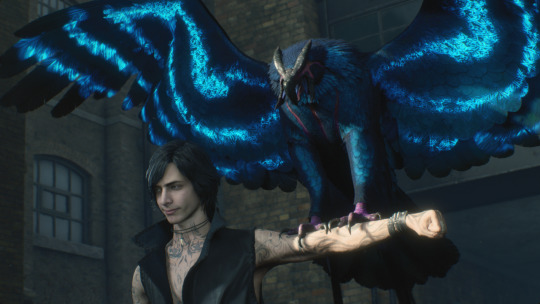
Looking back on the history of the series, Devil May Cry has this really deep focus on presenting bombastic and energizing tracks. Another game in the series that had a really eclectic soundtrack was Ninja Theory’s DmC: Devil May Cry–featuring Noisia and Combichrist. Did the style of that game have any influence on this one?
Cody: Well from the very start, everything was based on Devil May Cry 4, as in all the references they sent us. But of course, it was something I personally looked into. It’s important to understand the trajectory of all these games, where it’s been, and how the fans reacted. And you need to make a decision about where you want your art to align with. It was very conscious from the very beginning that this game is Devil May Cry 5. That was a very conscious decision, not to stay away from that version of DmC, but to separate from it, stylistically. But yeah, the combat system that matures and alters the music was something we really liked about that game.
It’s really thrilling to hear DMC5’s music evolve depending on how well you’re playing.
Cody: Yeah, It was just something we were very conscious of from the very beginning. We don’t want to leave any players behind, but we didn’t want to make it easier for players either. It’s all about challenging yourself. But the worst thing that could happen would be if the game’s music was boring. I know this as a gamer, I know this as someone who goes listens to the same 32-second track on loop for hours. It’s the worst thing in the world: You’re stuck on a level for three days, you don’t wanna be listening to the same piece of music.
We really tried to craft these songs in a way, that if you don’t hit SSS rank, you don’t ever hear the chorus or the breakdown. By doing that, those parts of the song will never get boring. The goal from the start was to incentivize the player. There is something more, you should do your absolute best to get to your SSS, and you’ll get the payoff. There should be rewards for those players that accomplish that, and I think we achieved something beyond the normal combat music.
Did you enjoy your experience working with Capcom on Devil May Cry 5?
Cody: They’ve always been happy with what we’ve done and we’re always happy to give it to ’em. They’re such an amazing collaborator, and they really care about artistic vision, and they care about what you can bring to the table, and it’s truly an amazing experience working with them.
Casey: I was super excited to work on Devil May Cry. I’ve been playing this game since Devil May Cry 1, which came out in 2001. I remember my mom taking me to Blockbuster to rent it. And then you fast forward to 2017, when I was asked to work on it, I was already so freaking pumped to get started on it. We’re classically trained and I play guitar as well in the STEM program, right? I love doing so many different things and different genres. So being asked to genre hop is one of the best things about working in the field. TV and video games and film, all alike, and one day you could be writing a solo piano piece and the next day you’re writing “Devil Trigger.”
Ali: Yeah, for me, video games have always been a pretty large part of my life. It’s always been a love of mine. So, I remember playing games with my cousins when we were all kids and it was this bonding experience for all of us. And I never would’ve imagined that I’d be working on video games today. It’s kind of crazy to think about, but I absolutely love what I do. I love being able to work on various projects across various genres and kind of become a different person for a little while. And it’s really, really humbling, seeing how the fans have accepted our work. It’s very humbling, it’s very exciting, and, all in all, we’re very grateful to be a part of the Devil May Cry family.
GameSpot – All News
2 notes
·
View notes
Text
Long-Winded Essay About DMC and DmC Ahoy~!
Putting my rambling word-vomit under a cut, for the folks that don’t know/care about me blathering about one of my personal favorite series’~!
Allow me to preface by saying that I’ve loved Devil May Cry for as long as I can remember off the top of my head [I know I was certainly too young compared to the recommended age for DMC1 when that was newer, but to be fair, the original DMC is ridiculously tame aside from the violence and blood so that helped me get away with playing it]
And I say this, while following it up with my enjoying the reboot as well. It’s a fun, easy to pick up game with some absolutely stunning mo-cap cutscenes and art direction!
However, I always felt that something was just a bit... off, with the Reboot. Something that, aside from the rather terrible, polarizing press coverage and interviews with Ninja Theory prior to it releasing, kept it from being something truly great as an offshoot/different look into the concept of Devil May Cry. It’s something that recently resurfaced in my mind while watching SBFP’s Let’s Play of the reboot; it’s also an issue I’ve seen with many Elitist/”DMC Loyalist” players, and that something is quite simply taking the games[s] more seriously than what is necessary.
This is especially prominent with DmC: Devil May Cry, where Dante in particular has gone from a snarky, yet playful half-demon hunter who knows damn well what he’s doing when fighting demons, to a more abrasive, “Fuck You, Dad!” rebellious yet still somewhat charming personality, with a hint of Genuine Dumbass to him. Some of his most prominent story moments is his “Fuck You”-Off against the second boss, the Succubus, and the glimpses of his remade backstory that you discover along the way.
Interpretations vary wildly depending on who is crafting it, and I personally think both versions of Dante should be acknowledged and respected for their own reasons. But in regards to Reboot!Dante, there’s simply not enough there to invest most players in his character arc; and I personally believe it’s due to his ‘I don’t give a shit’ outlook for most of the game rubbing off a little too quickly onto the player to help them care about the protagonist.
It certainly doesn’t help that, despite the obvious differences, Reboot!Dante was simply far more removed and harder to relate to compared to his old counterpart.
DMC has long been a series about wacky, goofy, yet incredibly stylish hack-n-slash that makes no attempt to care about how ridiculous it all is; it knows what it is, and mainly cares about making sure everyone involved ends up having a blast when playing. So it stands to reason that, upon being “rebooted” with a more edgy, serious tone with an anti-capitalism message that’s about as subtle as a brick to the face, most people who are familiar with the old series weren’t exactly sure what to think of this new take.
It also most certainly doesn’t lean in DmC’s favor when realizing that, by comparison, the original was simply more memorable than the overly grim-faced, serious do-over that DmC wished to be.
Another, more pronounced issue concerns the theme of the main story itself, and how it was essentially nullified with the changes made to the Reboot: The Lack of Heart
A primary driving force behind the story of DMC, starting with the original mythos provided at the very beginning of DMC1, was the theme of humans possessing compassion, and thus their compassion translated into resilience.
Sparda, the Dark Knight “Who woke up to justice” was notable for being the first demon- an already exceptionally powerful one, at that- to be capable of compassion for the humans, which proved to be his most valuable trait when defeating Mundus when the original myth takes place.
Sparda’s compassion also led him to falling in love with a human woman, Eva, and becoming a father to two half-demon twin boys, Vergil and Dante.
It’s important to note that despite Dante’s feelings towards his late father, he believes- just as Sparda did- in the power of the human spirit, something that becomes especially noteworthy in DMC4.
In the reboot?
Sparda remains a powerful demon who broke away from the ranks to rebel against and defeat Mundus, but Eva was changed to an angel, leaving Vergil and Dante to be Nephilim instead.
Veering away from what ended up being an important, underlying story about compassion and the human heart, to being disconnected from humans almost entirely, leaves the subplots and other themes of the DMC universe largely unfocused feeling.
One could say Reboot!Dante’s relationship with Kat is what serves as the bridge between Angel/Demon and Human worlds, but it has always felt like enough of an afterthought to finish up that dynamic to make it feel worthwhile and complete.
Does this mean that DmC: Devil May Cry is actually kinda meh/bad? Like any media, that depends on the player.
In spite of my less-than sparkling thoughts about the Reboot when comparing it to the original series, I do still find it to be an incredibly fun game which I would recommend to someone if they were looking for a good game to sit down with and whittle away the hours in.
Though in terms of finding a ridiculous story/cast of characters that ends up being fun because of it’s ridiculousness, then I’ll almost always end up finding my way back to DMC 1-4, and soon 5 when it releases.
This was 99% my brain attempting to piece together what’s always kept me from fully enjoying the reboot as a whole, so if it comes across as patchy and inconsistent, that’s most definitely the reason why |D
11 notes
·
View notes
Text
Tv tropes dmc 5

TV TROPES DMC 5 SERIES
Inversely, there were times when the Japanese team members had to rein in Ninja Theory, such as NT focusing a bit too much on " cool visuals first" instead of working to match the gameplay and having to tone down the earlier concepts as the final product would've resulted in a Z-rating in Japan, the CERO equivalent of the ESRB's AO or 18+ only rating.According to interviews, Dante's design was originally far closer to previous versions, before Capcom said the changes weren't extreme enough and told Ninja Theory to "go crazy with it.".The latter game from the original continuity ended up selling more and had a better reception than the former. Within the same franchise, no less! Two Updated Re Release games - DmC: Devil May Cry: Definitive Edition and Devil May Cry 4: Special Edition were both released on 2015.Revengeance had better sales figures and fan reception, but DmC received a better critical reception. Both are developed by a studio and a creative director different from the traditional ones, hazily canonical, and contain fairly significant aesthetic departures. With Metal Gear Rising: Revengeance - both games in long-running Japanese franchises about white-haired, pretty, superpowered, vengeful young men with troubled pasts, stronger dark sides and acrobatic slicey-choppy skills.The game's art director, Alessandro Taini, during a GDC 2013 presentation went on a rant with a slideshow where he, someone who had no part in designing the original Devil May Cry, tried to explain to the crowd what Dante really is and isn't, presenting images of scenes from Brokeback Mountain and Batman & Robin with DMC4 Dante photoshopped in, while comparing the reboot Dante to Tyler Durden.Director Tameem Antoniades did not take the fan reception of DmC well, accusing them (among other things) of being blinded by their nostalgia.It's Vergil who kills them after they've already been disarmed, via sniper bullet, to Dante's obvious mixed horror and shock, in a cutscene that makes it clear that's what the audience is also supposed to be feeling. The closest that Dante gets to anything that low is fighting a gigantic demonic "baby" ordered into battle by its equally-demonic mother, who can turn herself inside out to release it and is definitely evil what's more, Dante makes a point of defeating them without killing them and taking them hostage. That does not occur in the game at any point. Cowboy BeBop at His Computer: Controversy broke out over Dante reportedly killing an unborn child/pregnant mother in order to proceed during the game's plot possibly forcing the hand of the player.It probably helps that the soundtrack was one of the very few areas that even people who complained They Changed It, Now It Sucks! didn't have many complaints about (since past games also featured heavy metal soundtracks). Colbert Bump: Industrial metal band Combichrist got a bit of a newbie boom when their music was one half of the main soundtrack to the game (consisting of both already-existing tracks like "Never Surrender," and new tracks made for the game like "No Redemption").Some have even brought up the middle ground that he might have actually been referring to the Definitive Edition update, which the Japanese team had more of a hand in working on. Of course, with the Broken Base being what it is, people think Hideaki's praise is either token professionalism, Japanese Politeness note Itsuno was brought in midway through development of the game to assist in some design, or at the very worst, "contractual shilling", even in the face of DMC5 implementing some of the better features of DmC. This seems starkly in contrast to how Ninja Theory treated Hideaki during the development of DmC, at least in its early days.
TV TROPES DMC 5 SERIES
Even back with Devil May Cry 4: Special Edition, the mainline series was already borrowing from the spinoff with Vergil gaining the option to teleport after a summoned sword, which was something DmC Vergil could do. Indeed, a lot of DMC5 borrows much from the art direction of DmC. In an interview by Devil May Cry 5 director Hideaki Itsuno, he calls Ninja Theory "style incarnate".Acting for Two: Mundus and Bob Barbas are both played by Louis Herthum.

1 note
·
View note
Text
The true, cocaine-fueled story behind Back to the Future’s DeLorean
What’s the link between Hollywood, an American businessman, time-travel, and a mountain of cocaine big enough to make even Keith Richards’ knees tremble? Answer: the DMC DeLorean, AKA the DMC-12, AKA the car from Back to the Future.
This weekend marks the 35th anniversary of Back to the Future, so let’s travel back in time and pay homage to the real version of that Mr Fusion-powered 88 mph gull-winged chariot. Strap in, because it’s a wild ride.
[Read: Remembering the Nucleon, Ford’s 1958 nuclear-powered concept car that never was]
But why a time-travelling DeLorean?
Most of the world, certainly outside the US, probably had no idea about the eponymous DeLorean until it featured in Back to the Future, which first hit screens in 1985.
First off, the time machine in Back to the Future was never actually even meant to be a car, let alone a DeLorean. According to director Robert Zemeckis, speaking on the DVD commentary of the films, the time machine was first a laser device, which was scrapped because, uh, dull!
In the second draft it was a refrigerator. But apparently the filmmakers were concerned it would encourage children to climb into fridges and get stuck, so that idea was scrapped too.
Credit: Ewan Roberts
The DeLorean dressed up as it was in Back to the Future Part 3. Arguably the best of the trilogy?
Eventually, the film’s producers decided that you’d want the time machine to be mobile, so they looked to cars. The DeLorean was chosen because of its radical look, and iconic gull-wing doors. Incidentally, its “spaceship” like appearance has been credited as one of the main reasons for it being chosen as well. The DMC-12 was made of brushed stainless steel and was left unpainted, because DeLorean apparently didn’t want to spend money on painting equipment.
In an interview with Esquire, the film’s co-creator Bob Gale said that the film was offered $75,000 to use a Ford Mustang. Gale basically told Ford to get stuffed, and responded with: “Doc Brown doesn’t drive a fucking Mustang!” and so, history was made.
Credit: Wikimedia CC
Original artist designs for the DeLorean time machine were “too good.” Film makers wanted it to look like the Doc had indeed made it in his garage. Many hardcore film fanatics restore and build up Back to the Future DeLorean replicas, just for fun. (This one seems to have something to do with Uber, eurgh.)
The importance of Gale’s remark shouldn’t be understated. The films were littered with other product placements — everyone remembers Nike’s self-lacing shoes and Mattel’s Hoverboard. But by 1985, the DeLorean Motor Company (DMC) had already folded, meaning Gale’s steadfastness on the DeLorean was even more valuable and stopped the car from being lost in the annals of time. Instead, we got one of the most iconic film cars ever.
By the time the films were released, the car had already developed a name for itself, for reasons that had little to do with the vehicle and everything to do with the jet-setting playboy that invented it.
The man, the legend
John DeLorean, the man who would later go on to found the DeLorean Motor Company (DMC), was a stalwart of the automotive world. He was the lead engineer behind iconic muscle cars, like The Pontiac GTO, and the Pontiac Firebird. He worked for many years at General Motors before parting ways with the American automotive giant in 1973.
In 1975 he set up the DeLorean Motor Company with the goal of producing an “ethical” sportscar. One that’s safe, reliable, and built to last. Think of DMC as the Tesla of its day. It wanted to challenge the status quo.
Credit: Wikimedia
John DeLorean was born in 1925. He rose through the ranks of the automotive trade thanks to his risk taking, take no crap attitude. He’d end up being one of the youngest high-ranking executives at GMC by 40 years old.
For design of the DMC-12, DeLorean called on one of the most influential yet unknown car designers, Giorgetto Guigiaro. The Italian designer had a way with the pencil that would see his designs go from paper to the silver screen on more than one occasion. His Lotus Esprit went on to become James Bond’s famous underwater car.
With such pedigree behind the project, you’d think the DMC-12 would find its way into the history books on its own merit. But that wasn’t to be, as the car wasn’t exactly any good and John DeLorean had a habit for going a bit over the top.
The first and only, DeLoreans
The first DMC-12 made its way onto the road in 1981, and around 9,000 units were ever made.
To build the car, DeLorean approached the British government, which threw £100 million of tax payer money at him to build a factory in Northern Ireland. The British government thought they were generating thousands of jobs in an area struck by war, DeLorean thought he was getting a great deal to realize his dream.
DMC-12s had a 2.85 liter V6 motor, putting out 130 hp, mounted behind the drivers powering the rear wheels. Drivers had a choice of 5-speed manual or 3-speed automatic transmissions which were pretty typical for the early 80s.
Credit: Wikimedia CC
The DMC-12 was ran on a 2.85 liter V6 made my Peugeot, Renault, Volvo. Nothing screams pedigree like those three names, right?
There was just one body style, featuring those iconic gull-wing doors, and no choice of paint. Every car was finished with brushed stainless steel, which some owners maintain using WD-40, not soap and water like every other car.
All of this came together to produce a car that wasn’t practical, particularly fast, and didn’t handle like a sportscar should. And because of mechanical flaws that needed to be worked out, production was delayed, and the car ended up costing far more than was initially forecast.
It was called the DMC-12 as it was originally going to be sold for $12,000, but various overruns and production challenges pushed its price tag closer to $25,000.
Credit: Wikimedia CC
Perhaps the most iconic part of the DMC-12 are its gull-wing doors. Any guesses where Elon Musk got the idea for his “Falcon” doors from?
Even though no accurate records exist of how many DeLoreans were ever sold, reports suggest the car had no problem initially capturing the hearts and minds of the American motoring public. But it couldn’t turn the initial interest into consistent sales.
A year later in early 1982, nearly a decade after DeLorean left GMC to set up his eponymous company, some 7,000 vehicles remained unsold.
Add this to economic recession and DeLorean‘s company was on the ropes.
A slippery slope
The British PM at the time, Margaret Thatcher, ordered DeLorean to raise more money to keep the company in business and support his employees. DeLorean, enraged, claimed that the British Government was closing his Northern Ireland plants on the grounds that its Catholic employees were “tithing the Irish Republican Army.”
But the reality was that DeLorean needed some $17 million to save his company from bankruptcy — that’s $46.5 million accounting for inflation.
Over the course of 1982, DMC’s financial situation worsened, and DeLorean was left with few options.
In October 1982 he found himself in a Los Angeles hotel room with a man he half-trusted in the hope he could save his company. The man, James Hoffman, a previously convicted drug smuggler, alleged that DeLorean had come to him looking to carry out a cocaine deal to generate funds to support his failing business.
During the meeting a briefcase supposedly filled with 27 kg (about $6.5 million worth) of cocaine was laid out on a table. Discussions had also alluded to a bigger deal, in which DeLorean would part finance the sale of $24 million worth of the drug. He agreed and was even recorded on video as saying the white stuff is “better than gold.”
Credit: Jason Leung
Despite not being the best car, even at its time, the DMC-12 has a dedicated following. Many enthusiasts restore and care for their beloved vehicles. According to classic car forum Honest John and the DeLorean owners club, in July 2019 there were about 150 in the UK. Not all were registered, though.
DeLorean was promptly arrested at the hotel on grounds of narcotics law violations.
However, James Hoffman was working with the FBI as an informant. According to reports, DeLorean never actually wanted to go along with the cocaine trafficking. In fact, it was Hoffman who approached and coerced DeLorean into the bogus deal, in an attempt to provide information to the FBI and have his own sentence reduced.
DeLorean was able to prove that he had been “play-acting” all along. He went along with Hoffman after threats were made against his family.
By August 16, 1984, DeLorean was acquitted on grounds of government entrapment.
DMC will never be forgotten
Sadly, a week after DeLorean’s arrest, his company filed for bankruptcy and by December 1982, just two years after the first cars were sold, DMC was no more and the British government shutdown his NI factory.
It wasn’t just DeLorean’s drug smuggling antics that landed him in hot water, he also had a track record of misappropriating company funds. DeLorean went on to spend many years unpicking legal cases related to the downfall of his beloved car business. In 1999, he declared bankruptcy. The story of his life has been made into a film of its own, called Framing John DeLorean.
Back to the Future press poster, look for the subtle presence of the DeLorean, the film’s true leading star.
DeLorean never gave up on his dreams and in his final years he attempted to resurrect DMC by designing and selling watches, eyeglasses, and sunglasses. He hoped he would eventually be able to drum up enough support and funding to relaunch his car company. In March 2005, John DeLorean died of complications from a stroke.
The DMC-12 might not have been DeLorean’s greatest car, and it may have met its premature end because of his Machiavellian antics. But it was those antics and self-belief that gave birth to the idea in the first place, and eventually led Back to the Future’s filmmakers to pick it as their time machine.
Back to the Future may have helped make the DMC-12 one of the most iconic cars ever, but it — and its creator — should be remembered for so much more than that.
Sources: Reuters, Washington Post, New York Times 1, New York Times 2, Volo Auto Museum, Drive Tribe, Esquire, Back to the Future DVD commentary
Read next: Elon Musk bought $45M in Tesla stock since ‘that weed joke’ — now it’s worth double
Corona coverage
Read our daily coverage on how the tech industry is responding to the coronavirus and subscribe to our weekly newsletter Coronavirus in Context.
For tips and tricks on working remotely, check out our Growth Quarters articles here or follow us on Twitter.
Source link
Tags: cocainefueled, Delorean, futures, Story, True
from WordPress https://ift.tt/2yMDfec via IFTTT
0 notes
Text
Video game Heroines: Less Cleavage, More Character
I am a straight man. I just want to get that out there. As such, I appreciate the feminine form, to put it diplomatically. That being said, I think that there is something severely fucked up with the way that woman are portrayed in video games.
Let’s back up a little bit. I have been playing video games since I was five. At first I didn’t really think much of the female characters beyond “how powerful are they in combat?” or “oh haha they did something silly again.” As I entered my dreaded puberty years, I noticed a few more things about the female characters.
I think, for video games at least, the starter culprits are Lara Croft and Tifa Lockhart. Now, I never played Tomb Raider, but you can bet your ass I knew who the main character was. She always brought her big guns to a fight. Which would be fine, excepts that she was intentionally overly sexualized. Can you honestly tell me what the character of Lara Croft is like? If I asked you to describe her, what could you tell me besides the fact that she has an abnormally sized rack?
Tifa Lockhart is the other example. She was actually a pretty decent fighter, and, if you look into her backstory, a deep character. But, sadly, all that is easily overseen by the fact that her tits are ridiculous, and that’s probably what most people remember her for. They don’t remember that she was a fragile, insecure child, who had to grow up with out a mother. They overlook the fact that she tried so hard to keep a strong appearance in the face of Cloud’s false memories. And even more, her strength and faith in her friends is what brought that emo baby of a main character back from self doubt and loathing. But no…people only remember two big things about her.
Well, I’m here, as a guy, to say that it really pisses me off that female characters nowadays have dwindled down to nothing more than huge titted, skippy clothes wearing, shallow harlots. Growing up, this is what I’m fed is supposed to be the norm for girls. Imagine my surprise when I get into my senior year of high school and the girls don’t have breasts the size of their heads, and wear clothes that actually cover their bodies (granted some of them didn’t do the later.)
I want to discuss some of my favorite female video game characters. The first is Heather from Silent Hill 3. There is so much to her character and development, that I can’t help but like her. She looks tired, with ratty hair. She wears bulky clothes, and she has a little bit of a sharp tongue. She’s not perfect. At 17, she had only recently kicked her smoking habit. She has so many flaws, and even though she looks “flawed” (notice the quotation marks) I actually think that she’s one of the more attractive female video game characters of all time.
Some of my other favorites include Flonne from Disgaea, Luna from Lunar Silver Star Story, and Nina from Breath of Fire 3 (even though she appears in all of them). If you aren’t familiar with these characters, take a quick look on google images and you’ll see that they aren’t oversexualized at all. Instead, they are fun, unique, and strongly developed characters. Which, I feel, lends itself to a more rewarding gaming experience.
I want to use the Resident Evil series as an example here. The first game introduced two more of my favorite characters, Jill Valentine and Rebecca Chambers. In the first game in the series, they were very modest, yet still attractive women. As such, the gamer was able to step into the game, and not focus on the absurdity of their attire, but rather become immersed in a terrifying gaming experience.
Lets fast forward to Resident Evil 5. I remember reading an interview where one of the head developers mentioned that they wanted to make the characters sexier. Sheva is wearing revealing clothing. Excella Gionne is just a walking pair of tits, and even Jill, who was so loved, became a blonde bimbo in spandex. Honestly, this took away from the game so much. Resident Evil was supposed to be about scares, not super sexy women. As a result, Resident Evil 5 is by far the weakest game in the series.
Don’t get me wrong, it is perfectly acceptable to have sexy women in video games, if done tactfully. Let’s look at Devil May Cry for this example. Trish and Lady are both sexy characters, but not in an overbearing way, and it works. Lady in DMC 3 in particular, doesn’t go over the top, she shows a little bit of her legs because she wears a skirt, but doesn’t bring excess attention to her sexuality. As a result, she is a fun, yet still sexy character.
At the end of it all, I think that it’s almost insulting to see all these super busty, half naked women in video games. It’s basically suggesting that we, as men, see a good female character as nothing more than a pair of legs and over exposed cleavage. This is just not the case. For some characters, yes it works, but 99% of the time, it’s overdone. I want to care about a character, not have a face full of tits for the entire game. I can’t take that game seriously. I can’t take that character seriously, and it’s irritating as hell.
As I said before, I enjoy the female figure just fine, but when I play a game, it’s like reading a book or watching a movie. I want a well developed character with depth and personality. If it’s a part of the character, that’s fine. If a woman in a game uses her body as a way to manipulate people, that’s fine. But we don’t need every female character to wear a mini skirt and tube top. To top it all off, it just doesn’t make sense. Why would you want all that skin revealed if you’re going into battle, or fighting zombies.
As I said before, some of my favorite virtual ladies are flawed, imperfect women. And I like it that way. I want to like a character because they are a likable character, and not because they look easy. As I said, it’s frustrating and even a little bit insulting. I hope that game companies realize that their male clientele have grown up, and it’s time for them to do the same.
1 note
·
View note